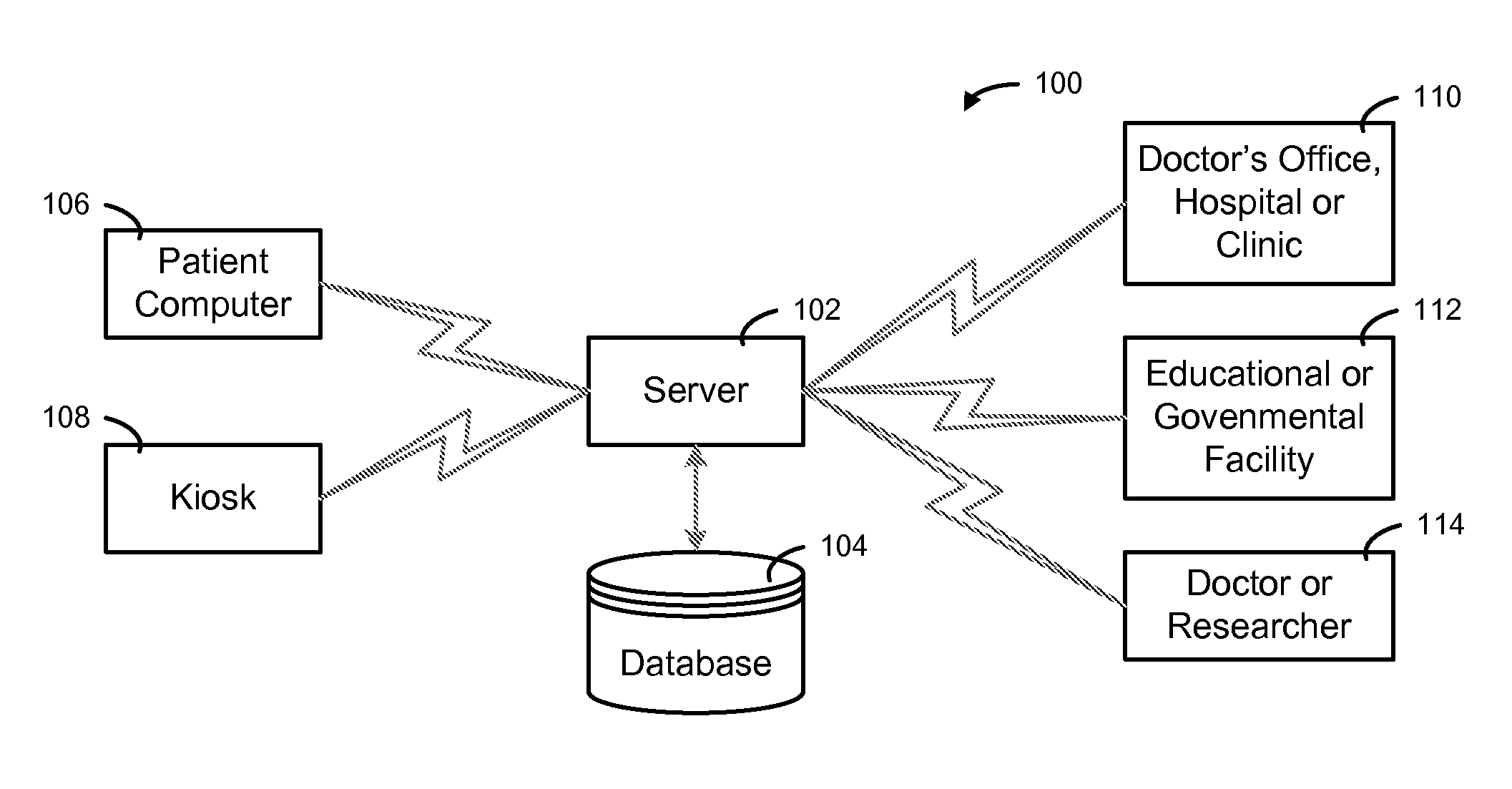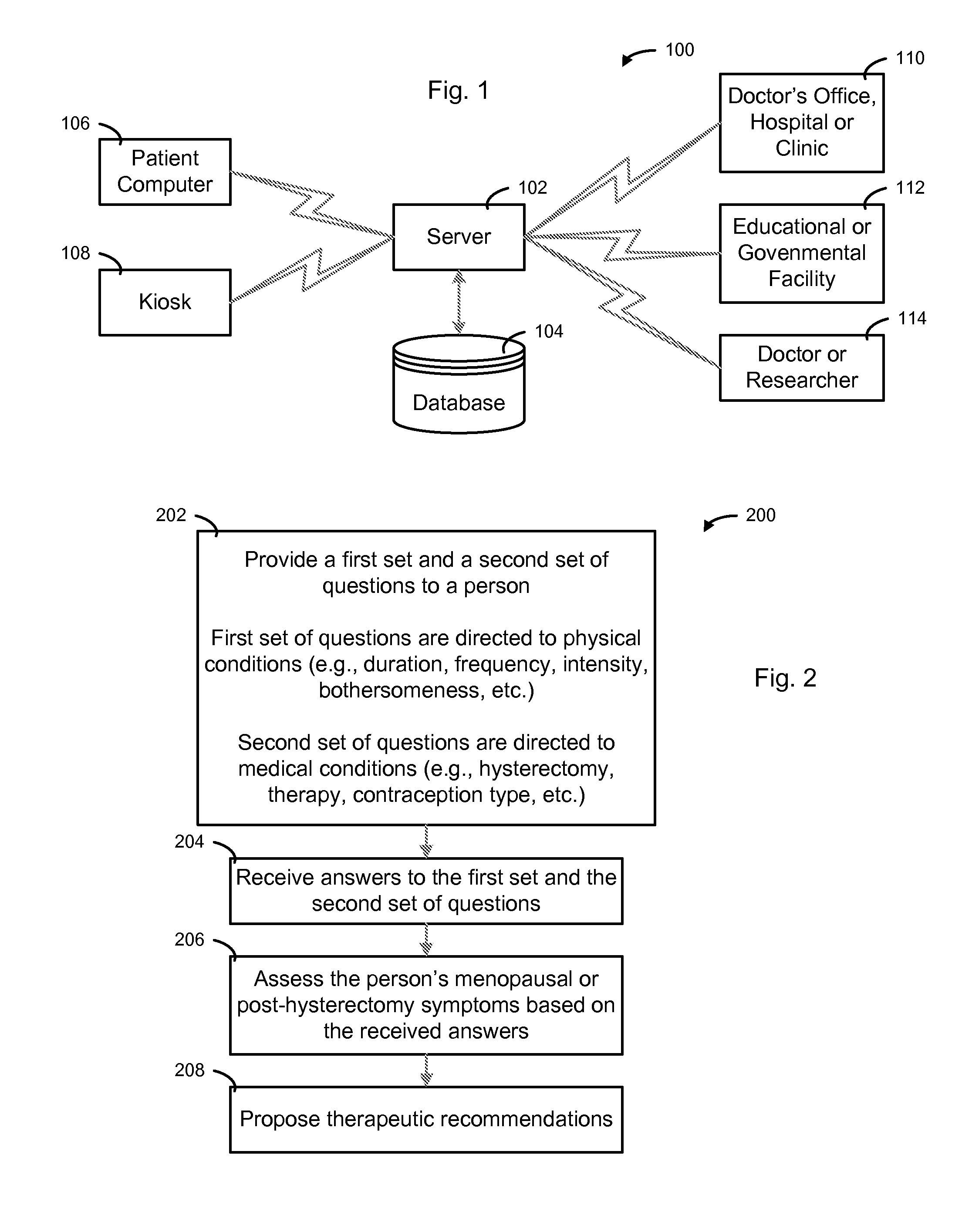System, Method and Apparatus for Assessing Menopausal or Post-Hysterectomy Symptoms
- Summary
- Abstract
- Description
- Claims
- Application Information
AI Technical Summary
Benefits of technology
Problems solved by technology
Method used
Image
Examples
Embodiment Construction
[0028] While the making and using of various embodiments of the present invention are discussed in detail below, it should be appreciated that the present invention provides many applicable inventive concepts that can be embodied in a wide variety of specific contexts. The specific embodiments discussed herein are merely illustrative of specific ways to make and use the invention and do not delimit the scope of the invention. The discussion herein relates primarily to the assessment of a person's menopausal or post-hysterectomy symptoms, but it will be understood that the concepts of the present invention are applicable to survey-based medical diagnosis and assessment.
[0029] The present invention provides a comprehensive, simple, valid, reliable, sensitive, and convenient instrument for subjective assessment of various characteristics of hot flashes that is convenient, inexpensive and adequate for use in an ambulatory setting. Accordingly, the present invention provides a reliable ...
PUM
 Login to View More
Login to View More Abstract
Description
Claims
Application Information
 Login to View More
Login to View More - R&D
- Intellectual Property
- Life Sciences
- Materials
- Tech Scout
- Unparalleled Data Quality
- Higher Quality Content
- 60% Fewer Hallucinations
Browse by: Latest US Patents, China's latest patents, Technical Efficacy Thesaurus, Application Domain, Technology Topic, Popular Technical Reports.
© 2025 PatSnap. All rights reserved.Legal|Privacy policy|Modern Slavery Act Transparency Statement|Sitemap|About US| Contact US: help@patsnap.com



